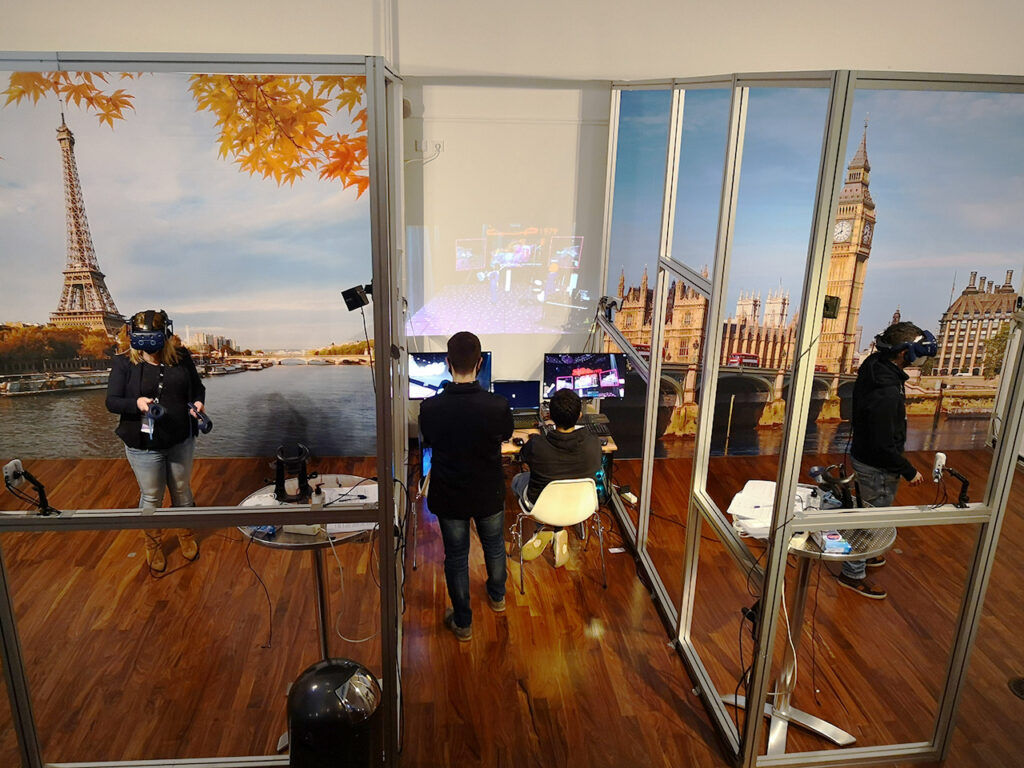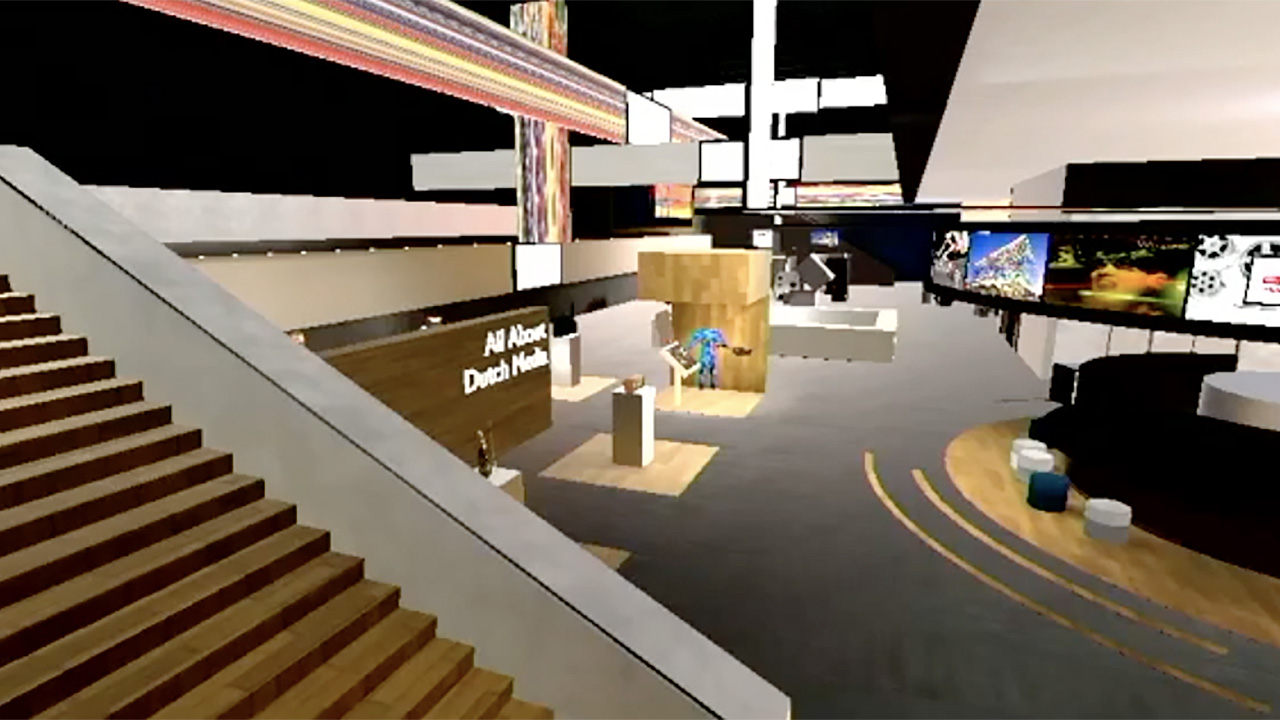Over VRDays Immersive Tech Week from November 15 to 17, visitors to Openbare Bibliotheek Amsterdam got to immerse themselves in a unique piece of Dutch pop culture. At a station at the public library, individuals could don a virtual reality headset and enter a virtual museum. There, they got to interact with a 3D recreation of a single cultural artifact: a costume once worn by Jerney Kaagman, lead singer of Dutch rock band Earth and Fire, for a performance of “Weekend” on the television program TopPop in 1979.
Visitors could virtually tour the costume’s history, try on the metallic blue bodysuit, and pick up virtual instruments to recreate the TopPop show. But why this outfit and why this show? “We selected the jacket because we felt that it was representative of the national culture,” Pablo Cesar, the project’s leader, tells Jing Culture & Commerce, “and that it would attract all ages because of the popularity of the TopPop show.”

Within the virtual environment, visitors can interact with the 3D model of the costume and recreate its appearance on TopPop. Images: CWI
Titled MediaScape XR, this demo is the product of a partnership between Centrum Wiskunde & Informatica (CWI) and the Netherlands Institute for Sound & Vision. Since 2019, the Dutch-based research center and museum have teamed up to explore new and innovative ways to platform cultural heritage, with MediaScape representing their key development. Using technologies including mixed reality and artificial intelligence for so-called “generous applications,” the model aims to enrich interactions between audiences and heritage collections.
For Cesar, who also leads the Distributed and Interactive Systems group at CWI, Mediascape XR marks an important step in reimagining virtual environments. “We essentially wanted to recreate a video conference in a 3D world,” he says. This, in turn, could deepen audience engagement and have wider application across the cultural sector. Cesar and his team are currently working with the National Opera of Ireland to explore a virtual simulation of the theater-going experience, besides seeking out other use cases for MediaScape XR.

The onsite installation of MediaScape XR at Openbare Bibliotheek Amsterdam. Image: Pablo Cesar
At the conclusion of the demo showcase, he shared more about the potential role of virtual experiences in enriching encounters with cultural heritage.
What were some key considerations as CWI and Sound & Vision developed the MediaScape XR demo?
On my team, we follow a very human-centric process, so we collaborated with the curators from the start. We conducted interviews and focus groups with the museum staff to better understand the requirements of the project.
The first thing to do was to decide what particular piece we wanted to focus on instead of doing the whole collection, which would not have been as impactful. And then the real difficulty came in creating the 3D model and additional elements of the exhibit. We also needed to decide what kind of information we wanted to provide visitors, so the educational material also needed to be thought through. We wanted to make sure visitors understand the technology and the context of the show.

“We needed to decide what kind of information we wanted to provide visitors,” says Cesar of the project’s build-out. “We wanted to make sure visitors understand the technology and the context of the show.” Images: CWI
Why the decision to center the installation on Jerney Kaagman’s TopPop outfit?
The costume and the show are part of the common memory of the Netherlands; it is something that unites visitors. I think the fact that it is a costume as well is helpful because then visitors can interact with it in ways that might not possible with other artifacts. You can try on the costume, and play drums and guitars while wearing it. There are certain artifacts that allow more immersive experiences than others. The combination of it being a very important part of the cultural memory of the country and the immersive potential made it the best artifact to use.
How do you think MediaScape XR helps enrich visitors’ encounters with museum content?
I think this is quite a novel experience in a huge year for virtual experiences. We wanted to offer visitors more than just a virtual web experience, and really immerse them in the environment. In their personal navigation of the costume, visitors get close to the artifact, better understanding it. We also made sure to have sufficient banners and videos for people who want extra information. We mixed gaming, education, and socialization. The fact that the people appear as themselves [in the virtual realm] and not avatars is unique, and really brings people together in a more personal way.
Why is digitization crucial to the preservation of cultural heritage?
Because we want to create ways for things to remain with us, hopefully forever. I think that the next stage is not so much about digitalization, which is going very well because archives are being prepared for the future, but more about how you show that digital material and share it. How can we make it more accessible will be a major question to answer.
I think that through these types of technologies, maybe we can begin to convince the younger generations that going to museums is a good thing. Hopefully, by just engaging them initially with these types of virtual exhibitions, they will feel the urge to actually go to the museum and see things for themselves.



